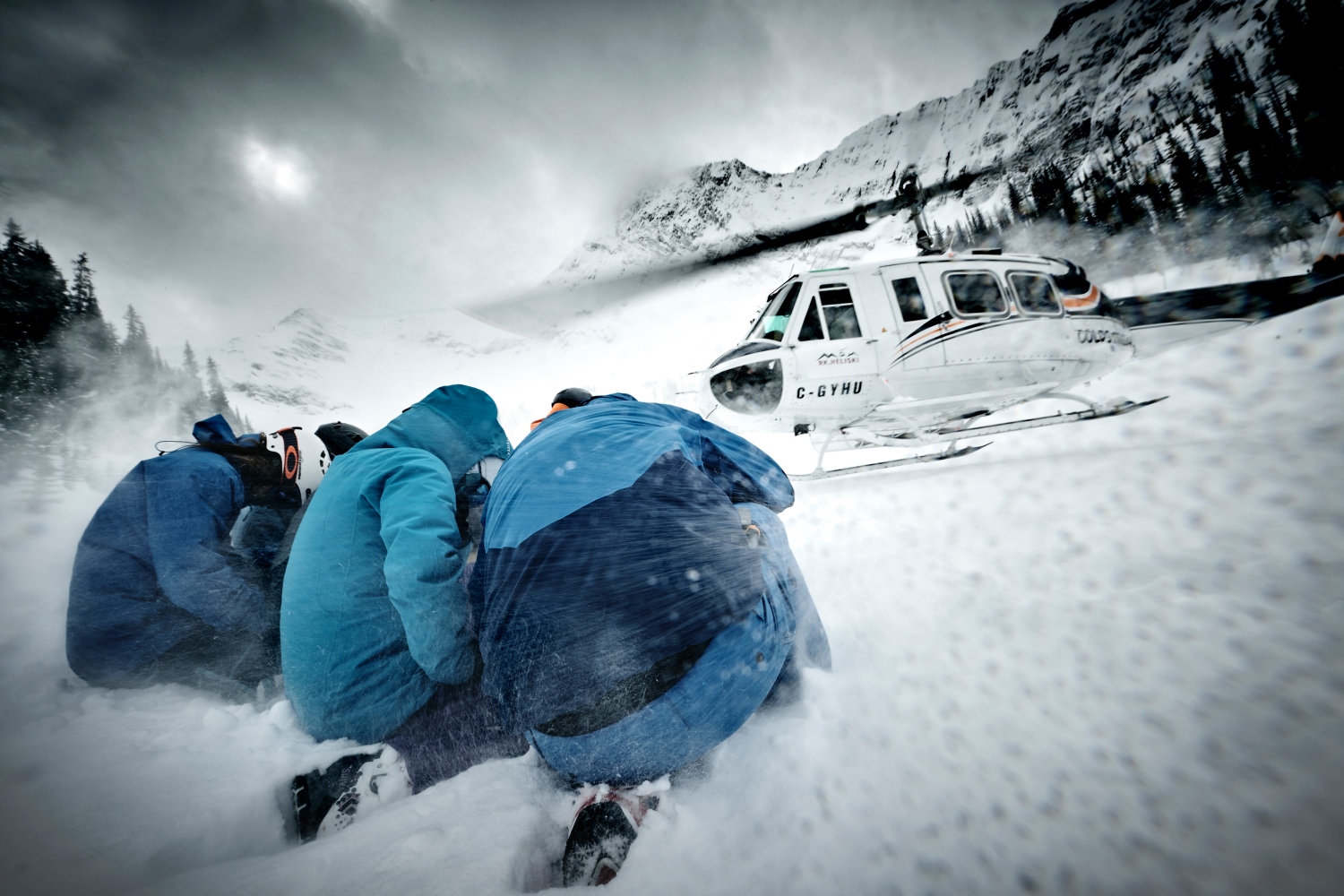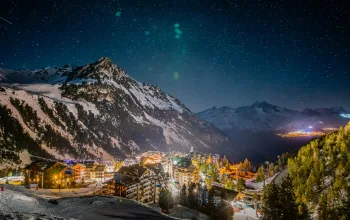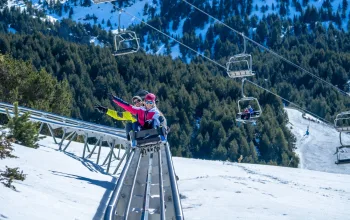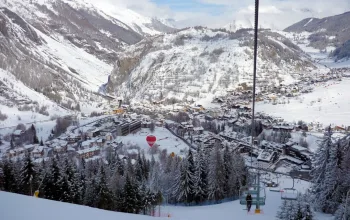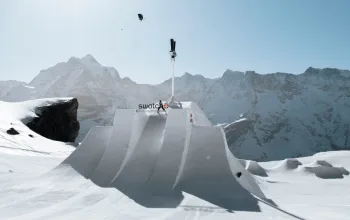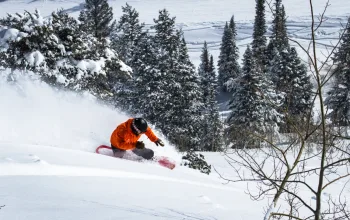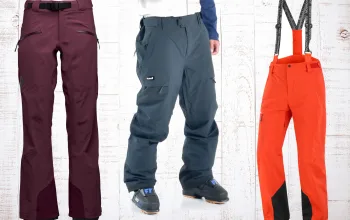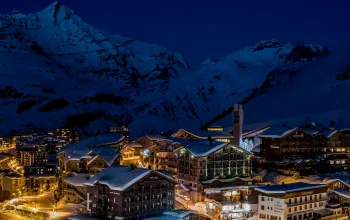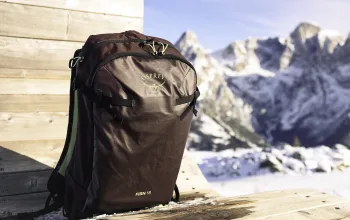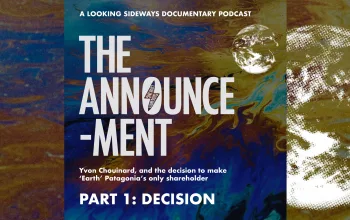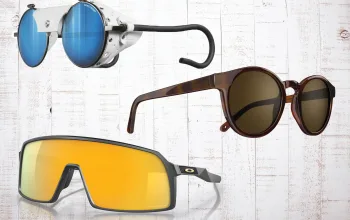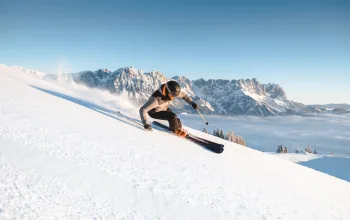Header image: Taxi to the Top
This was a dream job—a heliskiing shoot in Canada for Snow + Rock back in 2017. These helicopters are monsters—they can carry 14 people and fly in almost any weather. When they return to base every evening they buzz the local ski field with their huge thumping chopper blades whooping in the air. The terrain we accessed that day was magnificent! This was shot at 100th of a second shutter speed, to add a bit of movement and drama. It helps emphasise the chaos of when these things come in to land.
Camera: Nikon D5
Lens: Nikon AF-S 14-24mm f/2.8
Settings: ISO: 200 | Aperture: f22 | Speed: 100

The word ‘legend’ gets thrown around a lot in skiing and snowboarding, but Ross Woodhall is the real deal. Among the first wave of Brits to discover snowboarding in the 80s and early 90s, when the still-new sport was taking the UK’s dryslopes by storm, Ross quickly caught the bug. He jacked in his job to chase the snow, cramming 16 seasons into 10 years with back-to-back winters in Europe and New Zealand.
Over the years, he’s photographed a who’s who of international pros, in many of the world’s most exotic locations—often from the back of a helicopter. Yet despite this high-flying career, he’s never lost his down-to-earth attitude, or his self-deprecating, Brummie humour. Here, he explains why he keeps coming back to the mountains.
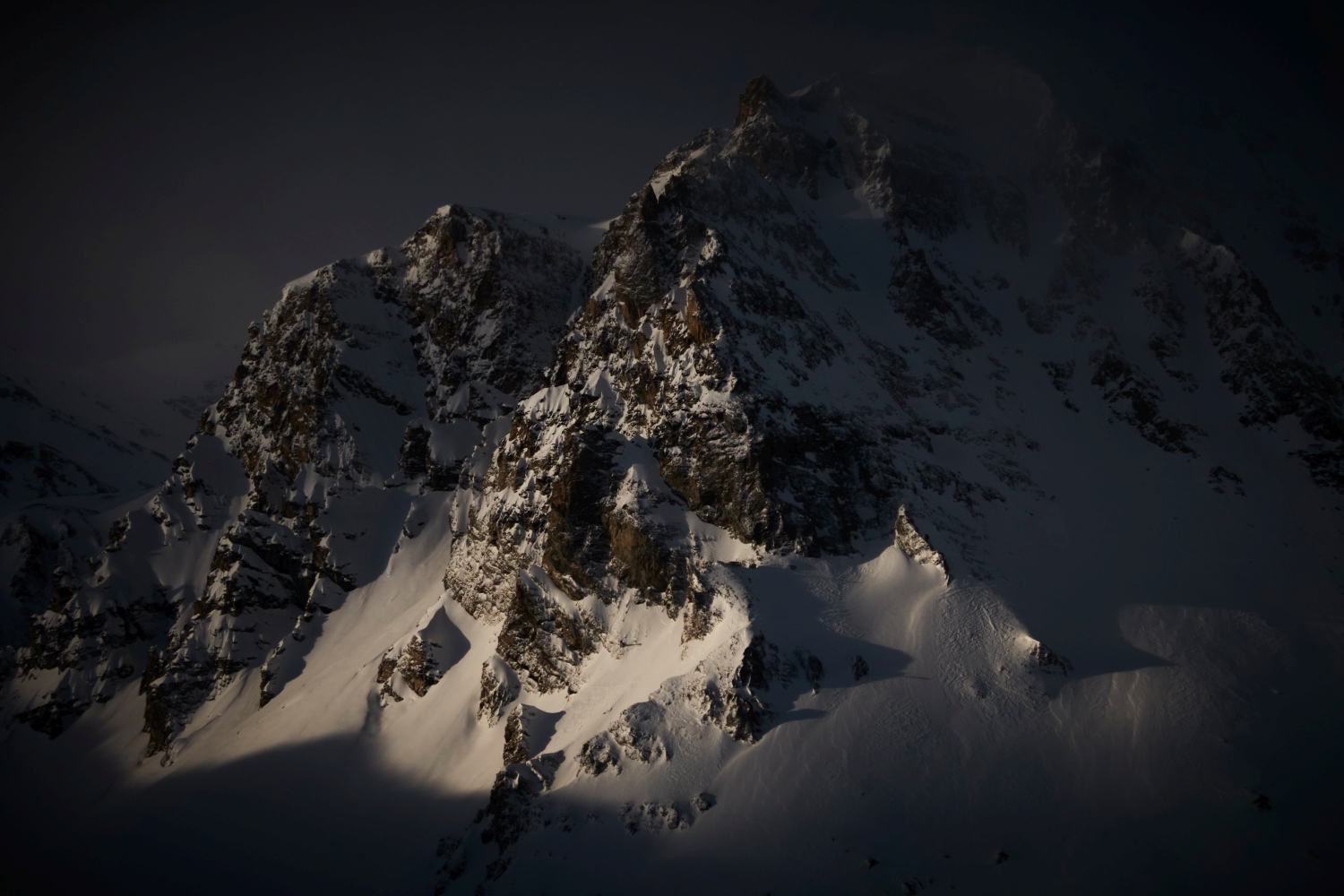
Morning has Broken
I love the morning light playing out on the mountainside. This was the first time we’d seen the sunlight after many days of blizzards and the anticipation was palpable. I shot this quickly, on my little point-and-shoot pocket rocket camera, which is a Sony RX100M6. A great start to the day!
Camera: Sony DSC-RX100M6
Lens: Built-in
Settings: ISO: 400 | Aperture: f/10 | Speed: 800
SNOW: How did you first get into photography?
Ross Woodhall: I was completely addicted to snowboarding, so I had this drive to try and find a job which involved being on a snowboard, I suppose. I had done my instructors’ exams down in New Zealand back in 1993, but the reality of instructing was teaching complete beginners on the best powder days of the season—which I soon discovered I didn’t really enjoy.
Around that time I was approached by renowned Aussie photographer Tony Harrington to be the rider in some snowboard action shots for him. It went OK but I kept looking at him and thinking “this guy has got it nailed”. I figured that as career prospects go, photography was a much better option than ‘snowboard model’. So I blagged a job with him shooting punters at the top of the chairlift. It’s a fairly brutal gig, but you learn how to use a camera and it was my first tentative step into the commercial photography game.

Fiending for Faceshots
This was shot for the brand PFD, who’d released a line of snowboards which I had a hand in developing. These boards are insanely good and absolutely rip in deep powder. To me this speaks of those days where the snow’s so good, you never forget it. I also love the fact that it’s only the bobble on his hat which tells you that it’s actually a colour image.
Camera: Nikon D5
Lens: 70-200mm f/2.8
Settings: ISO: 400 | Aperture: f/11 | Speed: 2000
S: You’re one of the lucky few in life who’s turned something you love into your job. When you’re shooting mountains, does it still feel like you’re doing it for fun? Or does it always feel like work these days?
RW: It is still pretty much a dream job, and lots of fun. If conditions aren’t perfect it tends to add a bit more pressure, especially if you’re shooting for a client, but over the years I’ve managed to learn a few tricks to get a great result. It definitely beats rewiring houses in the UK which is what I used to do in the 80s.
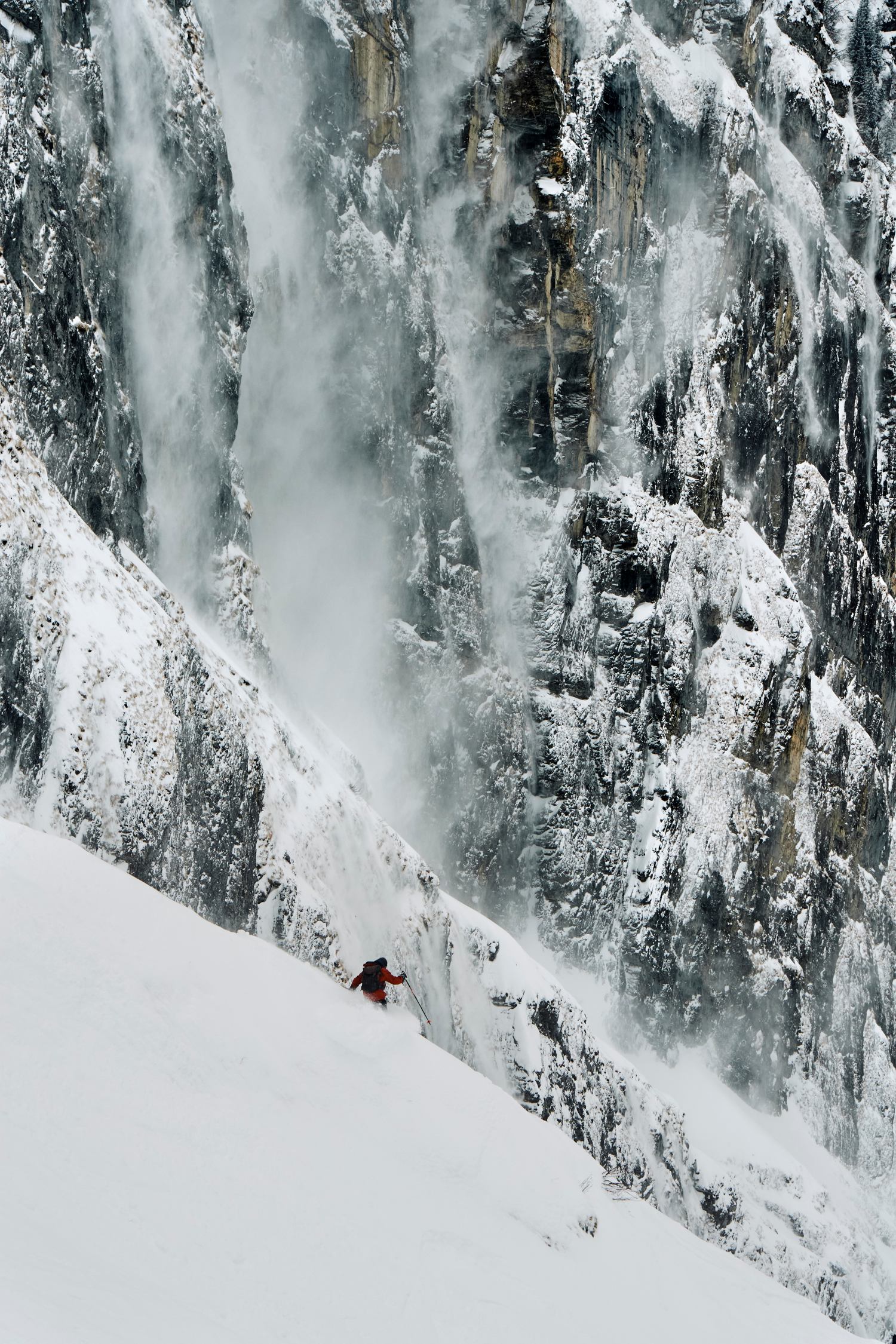
Chasing Waterfalls
This was shot in 2022 in Engelberg, Switzerland, with the legendary Dan Egan putting in a few turns for me. I first worked with Dan and his brother John heliskiing in NZ back in the 90s and have bumped into him every decade since somewhere in the world. I just love the spindrift avalanches pouring down the cliff face behind.
Camera: Nikon D5
Lens: Nikon AF-S 14-24mm f/2.8
Settings: ISO: 800 | Aperture: f9 | Speed: 2000
S: What is it that keeps you coming back to mountains, as a subject?
RW: At school I’d done my Duke of Edinburgh awards Bronze, Silver, and Gold, which I loved. Then when I started working as an electrician, which I pretty much hated. I was wondering: “is this going to be it for the next 45 years?” But after a chance meeting in a pub I found myself in Alpe d’Huez, France, rewiring the Hotel Hermitage. I remember waking up the first morning, walking out onto the balcony to see a classic Alpe d’Huez cloud inversion, and thinking to myself: “right this is it. I’m never leaving—this place is bloody paradise!” As a subject I find the mountains utterly beautiful, mesmerising and terrifying. I’ve had some of the most life-enhancing experiences in the mountains, but also some of the most terrifying too.
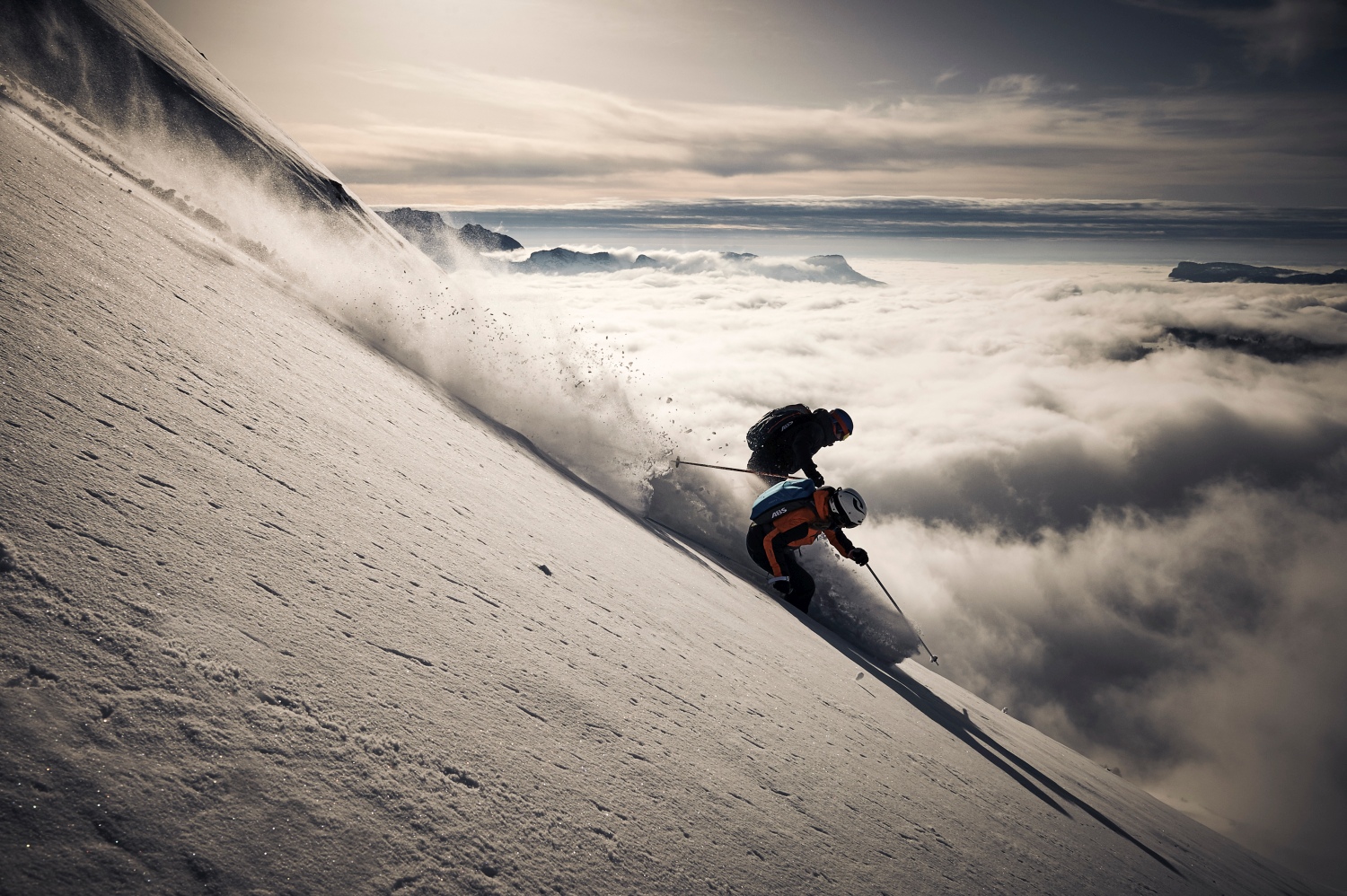
Field of Dreams
This is what dreams are made of: the last run of the day in La Clusaz. We had been sitting in fog all day, trying our best to get the job done. Then, quite literally, as we reached the top of the last lift of the day the clouds sank into the valley and gave us the goods we were looking for. A lesson in patience that I’ve learnt the long and hard way over and over again in the mountains.
Camera: Nikon D4
Lens: 70-200mm f/2.8
Settings: ISO: 400 | Aperture: f/16 | Speed: 1600
S: Who or what are your biggest photographic influences?
RW: My biggest influences in photography are definitely light and location. I’m obsessed with landscapes, especially mountains. Add the drama of light to that and that’s it for me. The vast majority of my ski and snowboard photography is just adding skiers into a beautifully lit landscape.
I love the work of Colin Prior and Andris Apse, two fantastic landscape photographers who used panoramic cameras to produce the most incredible results. I bought one myself actually, to try and shoot action on. Not the best idea I ever had!
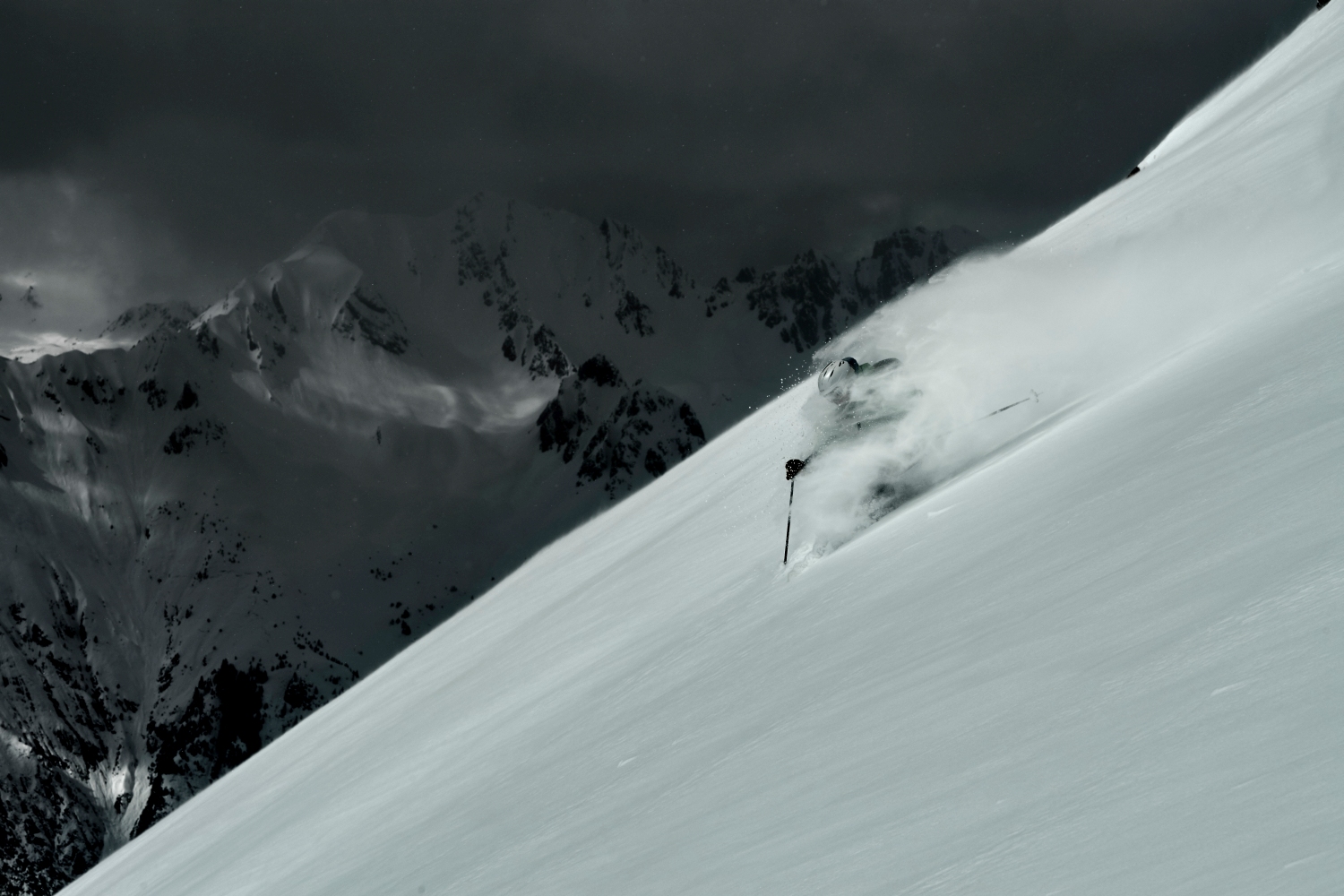
Powder Clouds
Light and location in perfect harmony. This was shot for PFD skis in Alpe d’Huez at the end of a long powder day with a storm fast approaching. I really love the light playing on the mountains behind and the way the image looks monochrome, even though it’s a colour shot.
Camera: Nikon D5
Lens: 70-200mm f/2.8
Settings: ISO: 400 | Aperture: f/13 | Speed: 2000
S: If there’s one photo you wish you had taken—by anyone, from any era—which one would it be?
RW: The image of the Earth and its oceans from space—the Blue Marble.
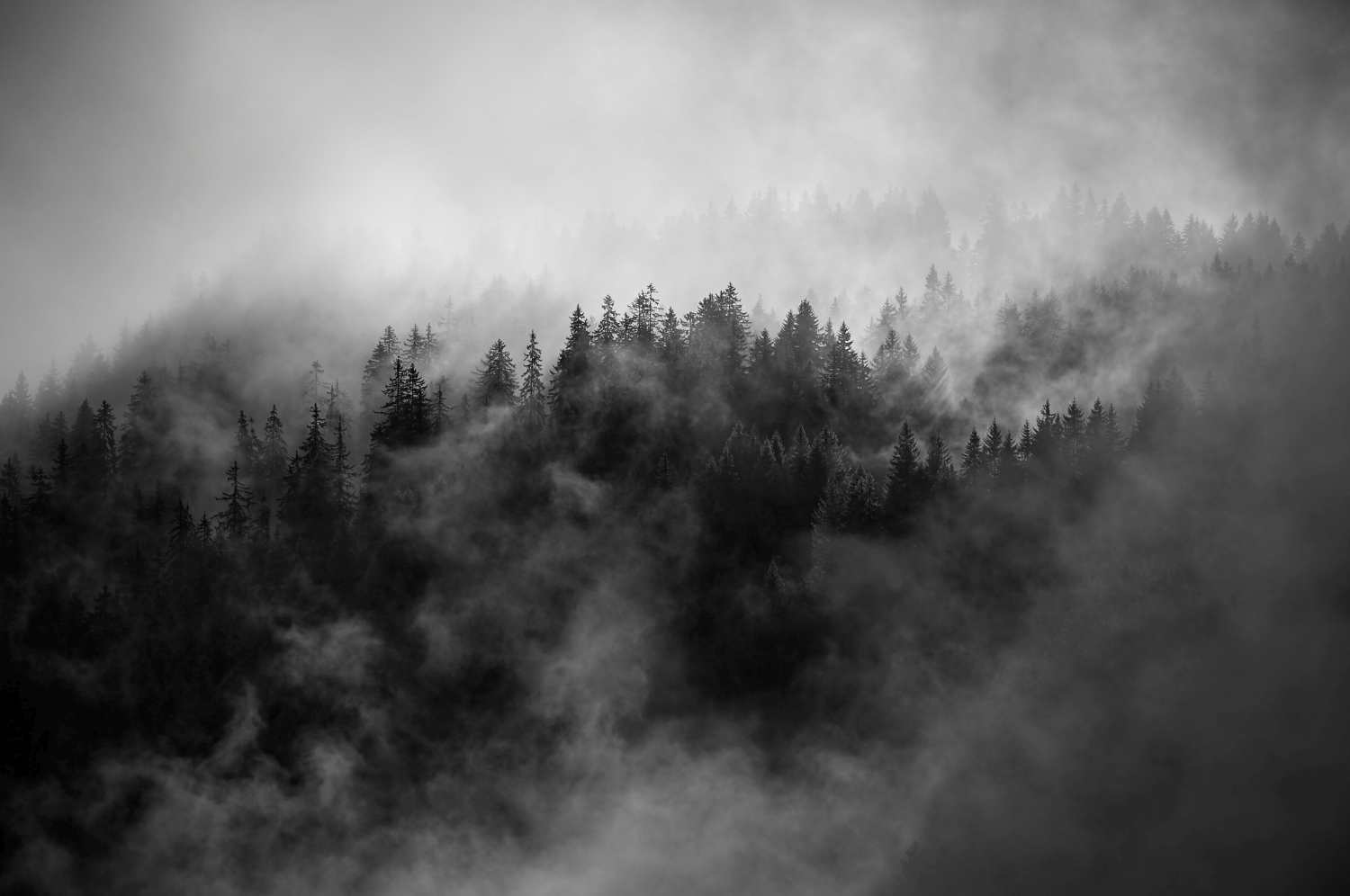
Sylvan Silhouettes
One of my favourite shots. Mist and fog slowly clearing from the trees after days of bad weather, on what was to be a fabulous powder day. Fond memories of this one.
Camera: Nikon D3X
Lens: Nikon AF-S 14-24mm f/2.8
Settings: ISO: 200 | Aperture: f5.6 | Speed: 1000
S: Where’s the craziest place your work has ever taken you?
RW: There have been a few over the years. Alaska and Northern Sweden were pretty immense. I shot the World Extreme Snowboarding Champs in ‘96 in Valdez from the middle of the course, which was pretty mental. I was hanging out on a spine, waiting for slough avalanches to give me a clue as to which direction the action might be coming down. I went to Northern Sweden, Canada and Alaska again with FHM magazine in the late 90s or early 2000s too, and that was pretty mad.
We had virtually unlimited budgets for everything—including helicopters. But I suppose the craziest times were always down in NZ, where you had complete freedom to go as crazy as you wanted to. I worked as a heli ski photographer in ‘96 which was simply the best job on the planet as far as I’m concerned. We had so much access to heli time there, with all the best skiers and snowboarders in the world passing through, because Tony Harrington and Kathy Brown were running the Rip Curl World Heli Challenge down there.

Extreme Angles
This was from Riksgransen, Sweden many years ago on a shoot with FHM magazine. It was taken in May, late in the evening, probably around 9 or 10PM, but there’s pretty much 24-hours of daylight up there at that time of year. It was shot from inside a crevasse, which was different to any angle I’d shot before. The means of access was a helicopter (what else?) which took off and landed right outside the hotel.
Camera: Canon EOS1 35mm SLR
Lens: 14mm fisheye
Settings: Shot in the days before digital data, and I didn’t write them down
S: They say the camera never lies. Do you think that’s true?
RW: The camera doesn’t lie but the framing might. Instagram vs Reality is the perfect example. We use that trick all the time on commercial shoots. The client is investing an awful lot of time and money to get a result that portrays a certain vision of their brand. I might frame a shot so you can’t see so much of the terrible snow pack, or use a wide angle lens to make the rock drop look a bit bigger. So the framing is hiding the truth there. Also, we are now in uncharted territory with the rapid rise of AI-generated content. So in future, the question won’t be “does the camera lie” it will be “was there a camera at all.”
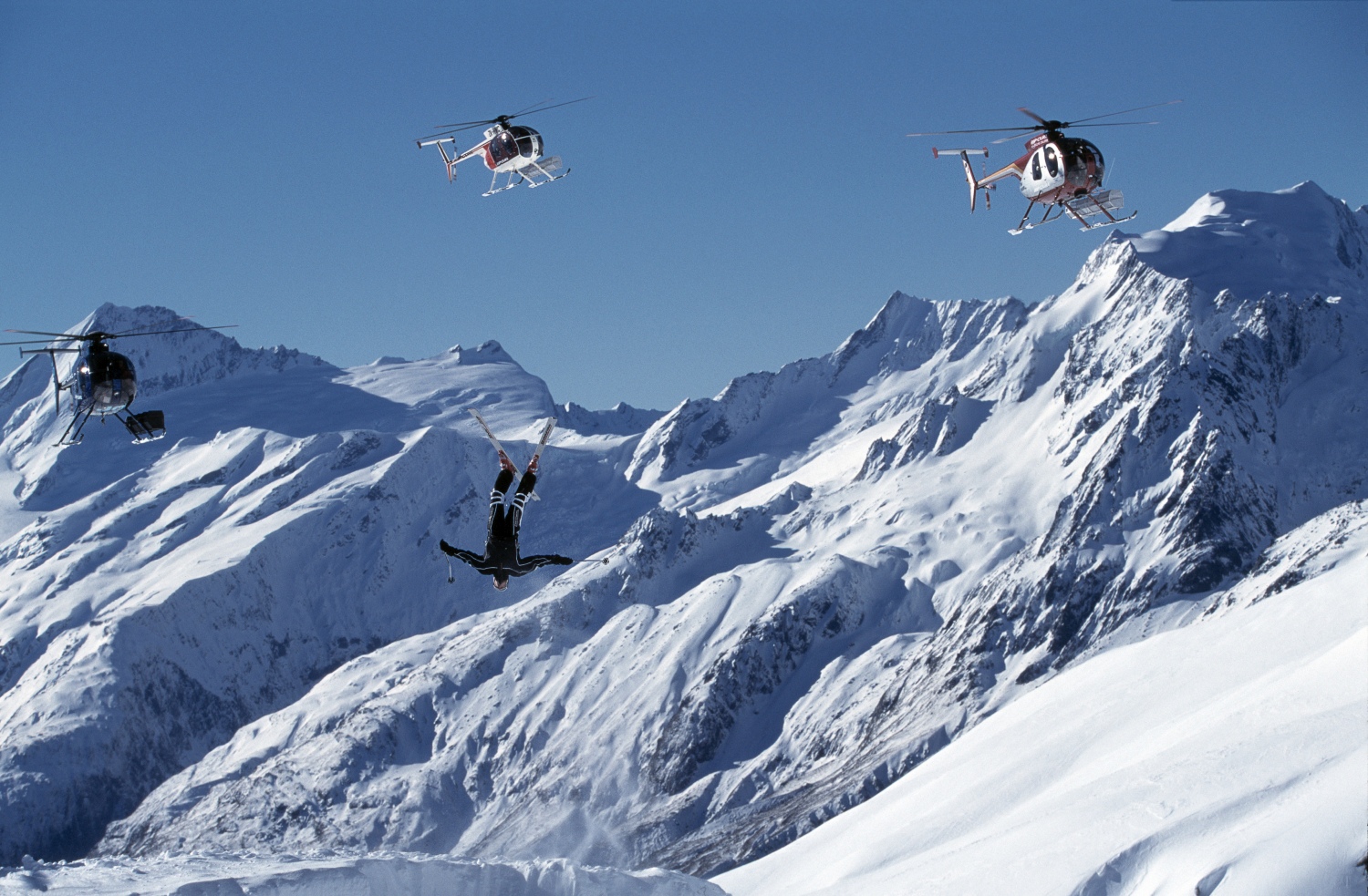
Helicopter Traffic Jam
This was shot at the Rip Curl World Heli Challenge in 2000 and it’s just a snapshot of the madness that surrounded NZ at that time. The Challenge was a two-week adrenaline fest with riders and press from around the world going nuts. For the main image, I zoomed in and cropped out the other helicopters, but I loved this shot of them hovering there like mechanical flies.
Camera: Canon EOS1v 35mm SLR
Lens: 200mm
Settings: Shot in the days before digital data, and I didn’t write them down
S: What are you working on at the moment?
RW: I’ve just got back from a shoot in Greece photographing water sports, cycling and summer lifestyle. I’m off to Switzerland next week to shoot some interiors and probably a bit of landscape in-between. While all this is going on I’m rebuilding my website and marketing. It never stops.
You can see more of Ross’ work at rosswoodhall.com, and follow his ongoing adventures on Instagram @rosswoodhall
